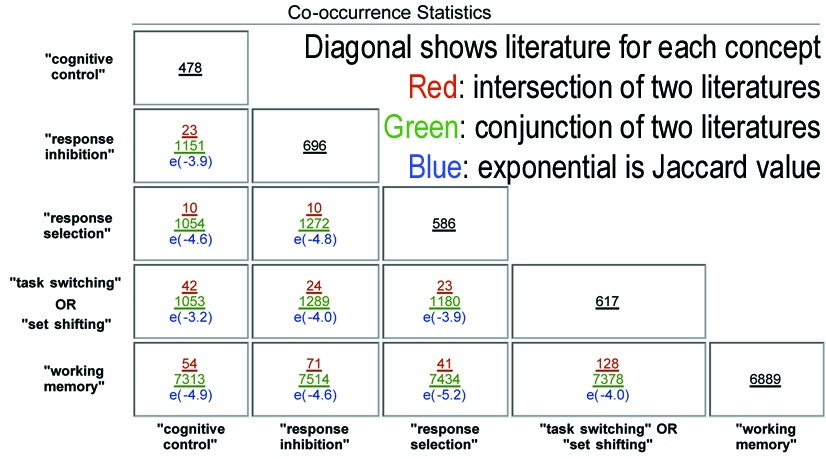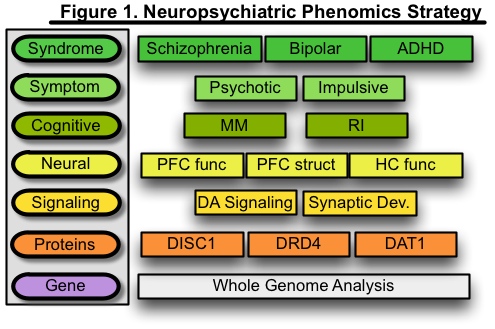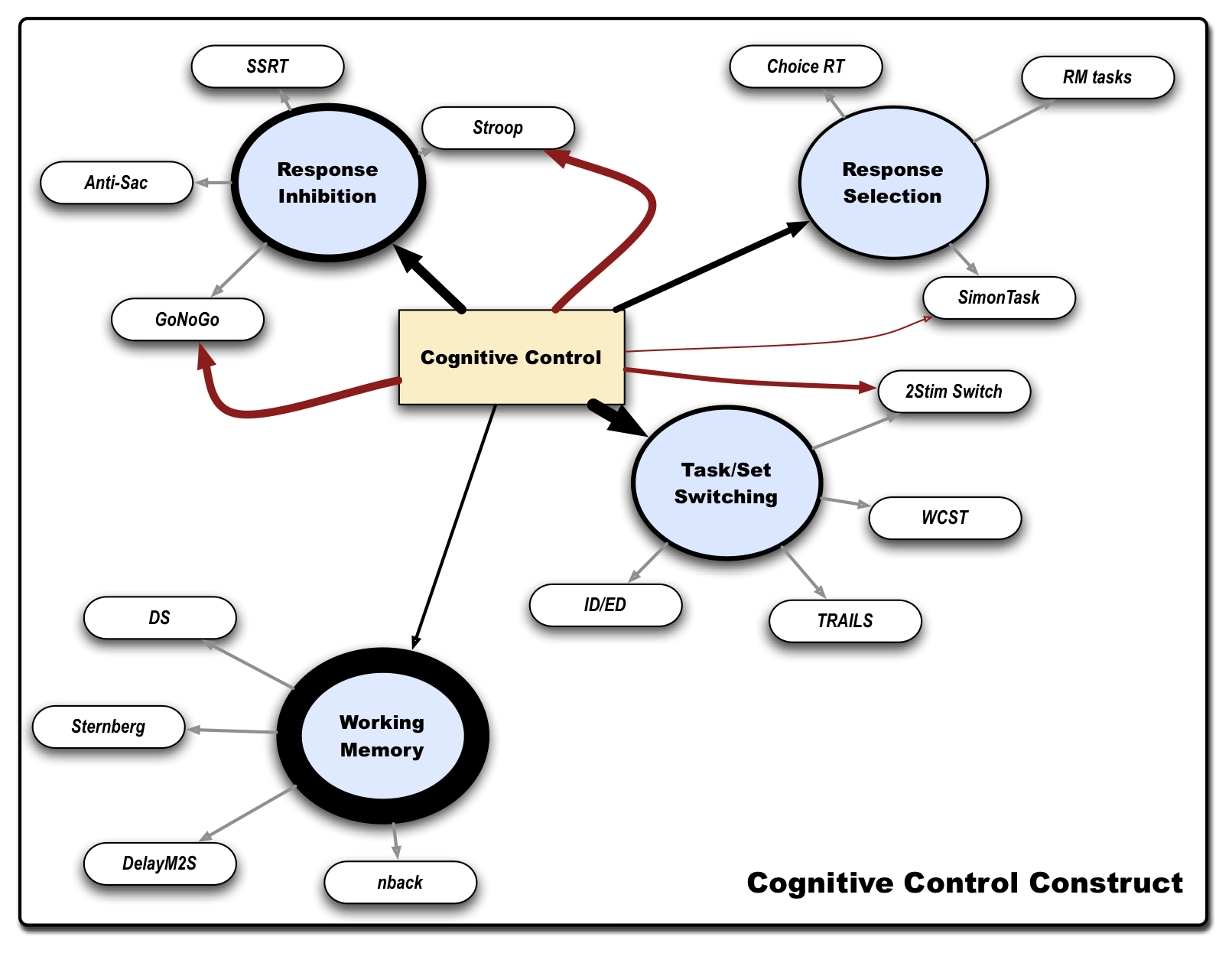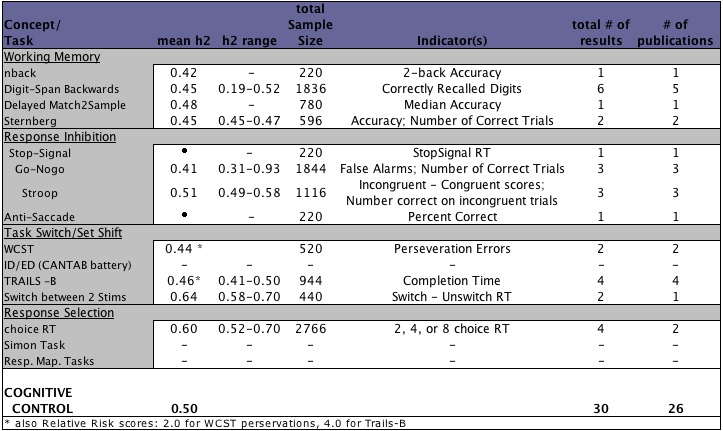Week7
back to NS210b Class page
MANUSCRIPT ID
- Title
Executive Functions are almost entirely genetic in origin
- Reference
Friedman NP et al, 2008
- Abstract
The human genome project has stimulated development of impressive repositories of biological knowledge at the genomic level and new knowledge bases are rapidly being developed in a bottom-up fashion. In contrast, higher-level phenomics knowledge bases are underdeveloped, particularly with respect to the complex neuropsychiatric syndrome, symptom, cognitive, and neural systems phenotypes widely acknowledged as critical to advance molecular psychiatry research. This gap limits informatics strategies that could improve both the mining and representation of relevant knowledge, and help prioritize phenotypes for new research. Most existing structured knowledge bases also engage a limited set of contributors, and thus fail to leverage recent developments in social collaborative knowledge-building. We developed a collaborative annotation database to enable representa- tion and sharing of empirical information about phenotypes important to neuropsychiatric research (www.Phenowiki.org). As a proof of concept, we focused on findings relevant to cognitive control, a neurocognitive construct considered important to multiple neuro-psychiatric syndromes. Currently this knowledge base tabulates empirical findings about heritabilities and measurement properties of specific cognitive task and rating scale indicators (n = 449 observations). It is hoped that this new open resource can serve as a starting point that enables broadly collaborative knowledge-building, and help investigators select and prioritize endophenotypes for translational research.
- Keywords
phenotype; cognition; heritability; genetics; cognitive control; informatics
- Input Author
fws
MANUSCRIPT DETAILS
- Introduction/Aims
- What are ‘executive functions’
- ‘an ability for individuals to control their own thoughts an actions’
- Unity and Diversity of EF
- initially thought of as a unitary construct
- most thought of now is at least three (inhibit, update, shift)
- most tasks are ‘impure’: one solution...use latent variables
- Twins
- Allow examination with fancy stats to see additive (a), common environment (c), and nonshared environment (e)
- Method
- ACE modeling of twin data
- Participants
- 582 folks from 293 same-sex twin pairs (colorado longitudinal twin study)
- 316 MZ twins (177 female)
- 266 DZ twins (137 female)
- age=16 or 17 ??
- IQ mean =102, sd =11
- Tasks
- Inhibiting
- Antisaccade
- StopSignal
- Stroop
- Inhibiting
- Updating
- keeptrack
- lettermemory
- spatial 2back
- Updating
- Shifting
- letter-number
- color-shape
- category
- Shifting
- WAIS and some perceptual speed measures too
- Results
 Heatmap of pairwise searches of latent constructs. Jaccard value is a measure of co-occurence |
- Discussion
- Executive functions show overwhelming strong genetic influence, and its not all related to a primary 'g' factor
- Implications for future research using endophenotypes, latent variable approaches, and the search for the neurobiology of complex behaviors



